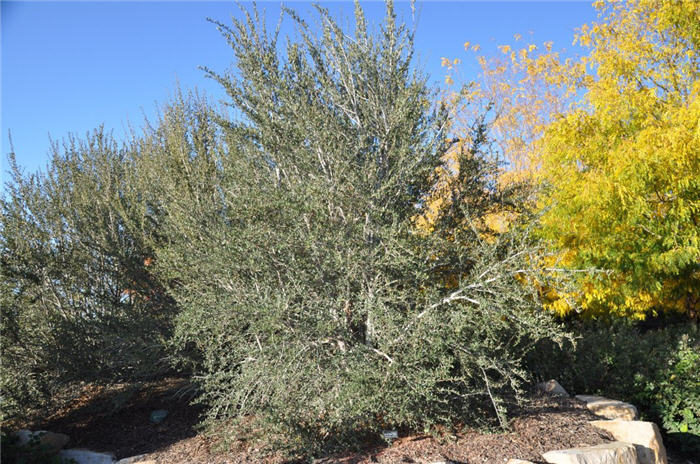| Botanical Name: Cercocarpus ledifolius | |
| Common Name: Curl-leaf Mountain Mahogany |

-
Anatomy
-
Culture
-
Design
Plant Type
Tree, Broadleaf Evergreen, Shrub
Height Range
6-12', 12-25'
Flower Color
Red
Flower Season
Spring
Leaf Color
Dark Green, White
Bark Color
Grey, White
Fruit Color
Brown, Red
Fruit Season
Summer, Fall
Sun
Full
Water
Very Low
Growth Rate
Moderate, Slow
Soil Type
Sandy, Clay, Loam, Rocky, Unparticular
Soil Condition
Average, Poor, Well-drained, Dry
Soil pH
Neutral, Basic
Adverse Factors
n/a
Design Styles
Formal, Mediterranean, Ranch, Spanish
Accenting Features
Multi-trunk Tree, Showy Flowers, Silhouette, Specimen
Seasonal Interest
Winter, Spring, Summer, Fall
Location Uses
Background, Shrub Border, Foundation, Walls / Fences
Special Uses
Screen, Small Spaces
Attracts Wildlife
Wildlife
Information by: Stephanie Duer
Photographer: Mountain States Nursery
Photographer: Mountain States Nursery
-
Description
-
Notes
Curl-leaf mountain mahoghany is a Utah native, useful as a large shrub or pruned as a small tree. It is one of the few native broad-leafed evergreens. It grows with a multi-stemmed, bushy, upright habit to about 8 to 12 feet tall and wide, though with supplemental watering it may grow taller. Flowers are small and reddish, blooming June to August. They are followed by an interesting curling, hairy, wiry plume. that is luminescent when back-lit. Bark is reddish brown and furrowed. Useful in a shrub or foundation border, or as part of a screen.
Grow in full sun in well drained soil; Is not too particular as to soil type as long as it is well draining, including sandy- loam, clay-loam, and rocky soils. Tolerates slightly alkaline soils. Once established, requires infrequent irrigation, though regular (monthly) irrigation will result in slightly more rapid growth rate. Does not respond well to shearing, and so prune selectively, if necessary to control size or form (see Guides). It is a good nibble for deer, which can be either a good or bad thing.